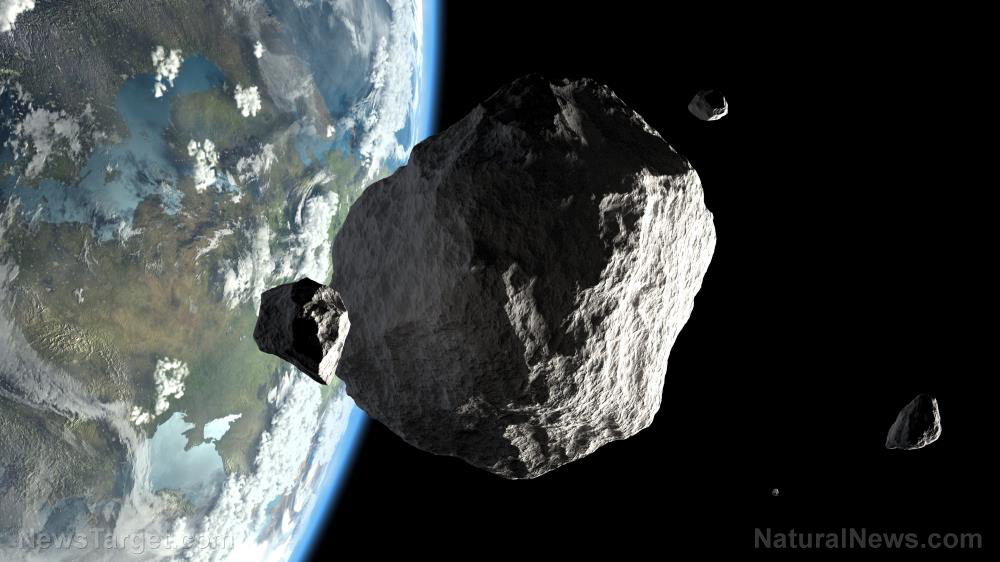
Asteroid 2020 QG broke the record for the closest flyby to Earth that did not result in an impact. But while it managed to avoid collision, the asteroid didn't fly past the planet unscathed.
The National Aeronautics and Space Administration (NASA) said that the path of 2020 QG was forever changed by the gravitational force of Earth. The asteroid is now traveling in space in a new trajectory since its close run-in.
"It's really cool to see a small asteroid come by this close because we can see the Earth's gravity dramatically bend its trajectory," said Paul Chodas, director of the Center for Near-Earth Object Studies (CNEOS) at NASA's Jet Propulsion Laboratory.
Record-breaking asteroid now on a different path
Asteroid 2020 QG journeyed past Earth on Saturday night, August 15. It flew 1,830 miles above the Indian Ocean in its closest approach, which is about one-fourth of Earth's diameter.
The asteroid is relatively small at 10 to 20 feet. If it were in an impact trajectory, it would have turned into a fireball – a meteor that has a visual magnitude greater than that of Venus, burning as it entered the atmosphere and breaking into fragments of rock.
Although asteroid 2020 QG did not land on Earth, Chodas said that its flyby around Earth forever altered its trajectory in space.
"Our calculations show that this asteroid got turned by 45 degrees or so as it swung by our planet."
Astronomers at the Palomar Observatory in California were the first to detect the asteroid. By the time they discovered it, however, it was already six hours past its nearest approach.
According to Chodas, detecting such space objects are challenging because they pass by very quickly. Asteroid 2020 QG traveled at a rate of 29,000 miles per hour – slower in comparison to other objects in space but fast enough to avoid immediate detection.
"It's quite an accomplishment to find these tiny close-in asteroids in the first place because they pass by so fast," Chodas added.
There are only three asteroids that astronomers were able to detect before landing on Earth: one in Sudan in 2008, the Atlantic Ocean in 2014 and Botswana in 2018. Every day, however, Earth is pummeled by about 17 meteors that are large enough to reach the ground.
Monitoring near-Earth objects
Asteroid 2020 QG is one of the more than 20,000 near-Earth objects (NEO) in the solar system. These are asteroids or comets that orbit the Sun and whose orbits come close to that of Earth. They can be as small as a few feet or be tens of miles long.
NEOs are likely to hit the planet and cause great damage depending on their size. For this reason, several space agencies across the globe are working on tracking and forecasting the behavior of these objects.
NASA's CNEOS computes the orbits of NEOs and their odds of hitting Earth. It has found 95 percent of the mountain-sized asteroids in Earth's neighborhood, none of which poses an impact risk in the foreseeable future.
NASA is currently working on a comprehensive compilation of near-Earth asteroids that are at least 460 feet wide. Larger asteroids are more easily detected farther away from Earth because they move slower across space than smaller asteroids. This upcoming compilation can help with risk assessment and inform hazard planning. (Related: NASA updates its plan to deflect potentially hazardous Earth-bound asteroids.)
Meanwhile, the European Space Agency (ESA)'s Near-Earth Object Coordination Center is also conducting efforts to monitor NEOs. It plans to launch the Hera mission that will be the first-ever probe to a binary asteroid – a system of two asteroids that orbit each other.
Hera can help scientists and future mission planners better understand the structure and behavior of asteroids in response to a kinetic impact.
Space.news has more on asteroids and their impact probability.
Sources include:
Please contact us for more information.














